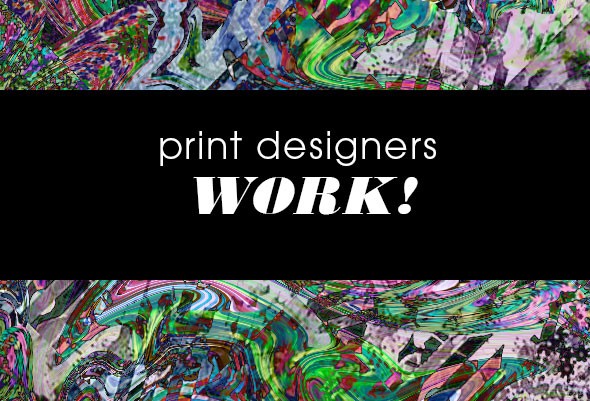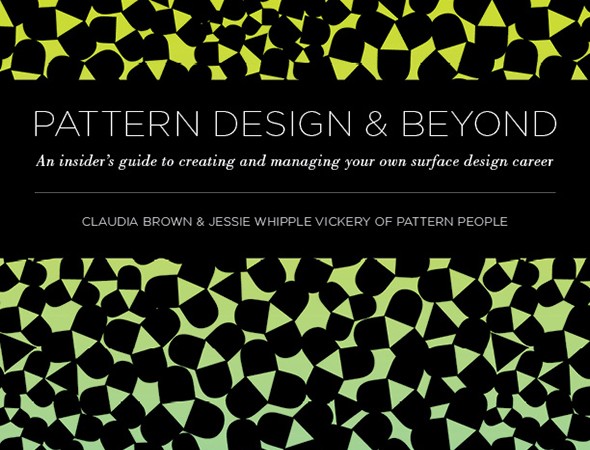Working as a Print Designer
Inspiration
So you’ve got a decent body of work and you are wondering how to get it out there. Should you work independently as a freelancer? If so, how do you find clients? Is it best to work for another more established print studio and if so, how do you approach them? Or perhaps simply finding a good job in-house is your goal. What are the pros and cons to each approach and how do they work?
Of course the first thing you need for any of these tracks is a great online portfolio. These days, there are plenty of sites that offer attractive templates such as Squarespace and WordPress. Put your best work up and include a great description of your experience, whether you’ve done client work or just work for yourself. A brief description of your process and what inspires you is always great to see too.
Many companies are looking to hire entry level designers so it’s ok not to have a lot of experience as long as your work shows what the company is looking for–usually a cross between unique and commercially viable and of course work somewhat relevant to that company. For interviews to on-site jobs, a great resumé is important as well. You can learn a lot about the industry by working for a company that uses a lot of print. The drawback to being an in-house designer is less creative expression and a more structured environment. Also you are very focused on one brand and perhaps not exploring enough options. It’s a matter of temperament though. Working on site may be just your thing.
Or perhaps you are looking to work for yourself. Working as a freelancer has its’ perks–flexible work hours, freedom to choose the kind of work you pursue and not having to answer to a boss. But you also have to like working alone, be self motivated and handle the many tasks surrounding having your own business–accounting, marketing etc. If this is the route you want to take, you can work for clients and/or contribute to the collection of another print studio.
Sites like Behance, Coroflot and Carbonmade offer not just a place to host your portfolio but a community of other designers and potential clients. These are a great way to find clients. Of course online marketing on social media like Facebook and Instagram always helps too.
Working with a larger print studio is a great way to learn about what types of prints clients are looking for. Studios will typically send you mood boards to show you what they are looking for. You will then design and send them your prints. Often you can get feedback for your work from seasoned professionals and this will help you learn how to work with a client. For a list of studios, visit the websites of industry trade shows and look up their lists of exhibitors. Here is one.
For more specifics about how the print industry works and is organized, tutorials on pattern design, tips on portfolio formatting and much more, check out our revised and updated e-book Pattern Design & Beyond.
Also, comment below about what you’d like to learn about and one lucky winner will get a free copy of Pattern Design & Beyond!



As a keen illustrator with a rich portfolio, I am highly interested in learning about how to find work opportunities and build stable relationships with clients.
Thanks for the feedback, Romina. Finding opportunities and building client relationships are certainly worthy goals. Keeping up with social media avenues is a great way to get exposure. Be sure to make the most of these avenues and find out how to maximize each of your posts.
Thanks for the article – it’s great to have a round up of what avenues you can go down in the surface pattern industry. I’m hoping I can work for a large company one day in homewares or stationery.
Thanks Beck! Glad you enjoyed the article. Home and stationary are both very large and varied and there is a good cross-over between the two worlds in terms of print needs. Happy designing!
I’m not sure if this is beyond the scope of the book, but I would like to know how you go about contacting companies for freelance opportunities when you are just starting out and possibly the contact details of companies that would be willing to look at your portfolio. I’m still studying design and working on my portfolio so any information really would be fantastic!
Charmaine, good question. We mostly just use social media to attract clients to us. Sites like Coroflot etc allow for clients to see your work. Post your work and resume in as many places as you can. Brainstorm creative marketing strategies. There is more detail in Pattern Design & Beyond.Thanks for your comments!
HI, im vanessa im fashion designer, and i started design for friends and family, but i would like to start me brand, that is why i like to design my own prints , in specific like Alexander MCQueen that they use adapted prints to the pattern.
Thanks!
Vanessa, thanks for sharing. We’ll definitely keep your needs in mind as we create more products and tutorials. In the mean time, there are a lot of tools that will help you here: https://patternpeople.com/category/print-and-pattern-e-books-trend-reports/
Good idea Lindi! We will work on that!
ThankYou! I Will do that
Comments are closed.